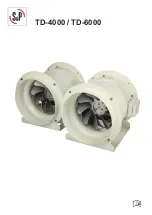
23
1.
2.
3.
4.
Roof Support
The roof support is supplied as a kit complete with two side plates for fixing to
the roof trusses, a band to give lateral support to the chimney as it passes through
the roof, and 3 self tapping screws, which are secured to the chimney through the
band to give a load bearing capacity. When the plates are installed above the roof
trusses as in Fig.1 the maximum number of pipes, which may be suspended from
the roof support is 6 x 1m pipes. When the plates are attached below the trusses
as in Fig.2 the maximum number of pipes, which may be suspended is 4 x 1m pipes.
The band should be lowered down over the top of the ICID Plus pipe, and
positioned so that the the side plates are resting on top of the roof trusses as in
Fig.1 or below the roof trusses in the case of Fig. 2. The recommended position
is always as per Fig.1 where circumstances allow this solution.
The band should then be tightened using the nut and bolt provided.
Using the holes pre-drilled in the roof support band, drill 3mm holes in the
outer case of the chimney section (drill bit should be set for a depth no greater
than 10mm to avoid any damage to the liner of the chimney)
Use the self tapping screws provided to secure the clamp band to the outer
casing of the chimney section.
Please note: It is the responsibility of the installer to ensure that the joist
to which the roof support is being attached is load bearing and capable of
withstanding the weight of the system being installed.
Fig.1
Fig.2
Ceiling Joist Support
A
A
Ceiling Joist Support
The joist support can be used in 2 different ways:
Option 1 - where the chimney passes through a combustible ceiling into the roof
space, and the weight of the chimney has to be taken at floor level. The ceiling joist
support must be firmly fixed by using bolts or screws. For load bearing Data refer
to tables 1 and 2 on page 33. (as per Ventilated Support Plate)
Option 2 - Install as per option 1, but rather than use wooden stringers between
the joists, use the ceiling joist support arms, which are fixed to the joists using the
screws provided. The plate is then attached to the support arms using the nuts
and bolts provided.
1.
2.
3.
4.
5.
Frame a four sided level square opening within the joists using timber stringers
where necessary to allow for the correct distance to combustibles from the
outer wall of the chimney. This distance must be a minimum of 50mm on Gas
and Oil applications and 60mm for solid fuel applications (see Fig. 3 alongside
- distance x).
Lower the chimney section through the opening in the floor, and secure to the
next section of pipe.
Locate the two halves of the support plates around the chimney section, and
secure to the joists using screws or bolts.
Remove the self-drilling screws which are fastened to the clamp band.Then
fasten clamp band around the chimney section and position on top of the plate.
Tighten using the nuts and bolts provided.
Using the holes in the clamp band as a guide, fasten the three self-drilling screws to
the outer case of the ICID Plus system.
Note: Joints must NOT occur within the floor or ceiling joists.
Ceiling Joist Support
Arms
B
A














































